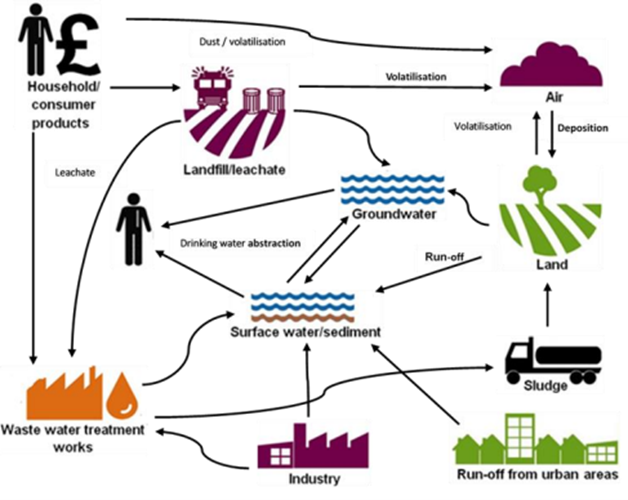Drinking Water
Read more about PFAS and drinking water
Per- and polyfluoroalkyl substances (PFAS) are a vast group of synthetic chemicals that have been used widely since the 1940s in a range of products such as non-stick cookware, pesticides, cosmetics, food wrappers and firefighting foams. There are over 12,000 types of PFAS which are valued for their thermal resistance and how they repel oil and water.
All PFAS feature a carbon-fluorine bond, making them highly resistant to degradation in the environment so they are commonly referred to as ‘forever chemicals’. Because of their use in everyday products, these persistent chemicals are released by various means, and through no fault of water companies, into the water environment through, for example, disposal in landfill sites, in some firefighting activities, or general wear and tear of the products.

These properties have led to the restriction of a few PFAS in the UK, such as Perfluorooctanoic acid (PFOA) and perfluorooctane sulfonic acid (PFOS), under the UK REACH (registration, evaluation, authorisation and restriction of chemicals) and the Persistent Organic Pollutants (POPs) Regulations.
However, there is limited information about many other PFAS and we support research efforts to understand their impact and what further regulations are needed.
Our role in safeguarding the quality of the environment and protecting and enhancing it whilst delivering our services is outlined in our Environmental Policy. There is, however, still more to do surrounding PFAS and our approach includes the following elements:
You can find out more about what PFAS means for our water, wastewater and bioresources operations by clicking on one of the boxes below. We explain how we are investigating and responding to the emerging situation so that we have the right information and data to support current and future operational strategies.
While more research is needed into how we reduce the impact of PFAS, there are steps we suggest should be taken forward to tackle this. Our views are guided by the fact that PFAS contamination does not originate from water sector operations and that treatment solutions cannot solve this.
We support Water UK’s call for a national ban on PFAS and that Government should introduce legislation to phase out PFAS usage in the UK and introduce a “producer pays” model which requires PFAS producers to control these substances at source.
This would align with action from elsewhere – for example Denmark has banned PFAS in food packaging, France has introduced new legislation to ban certain PFAS in cosmetics and ski wax and New Zealand has banned the use of PFAS in cosmetic products from December 2026.
In addition, we suggest that:
Read more about PFAS and drinking water
Read more about PFAS and wastewater
Read more about PFAS and bioresources